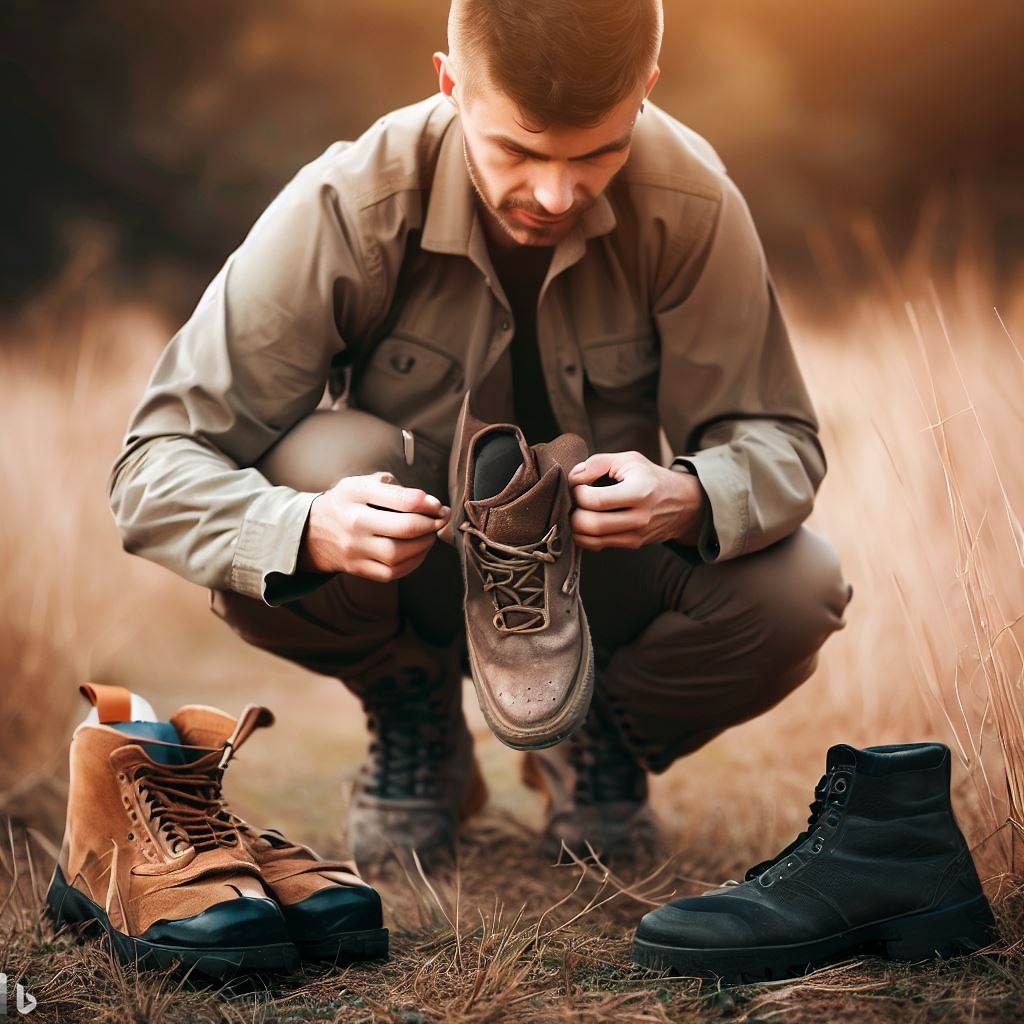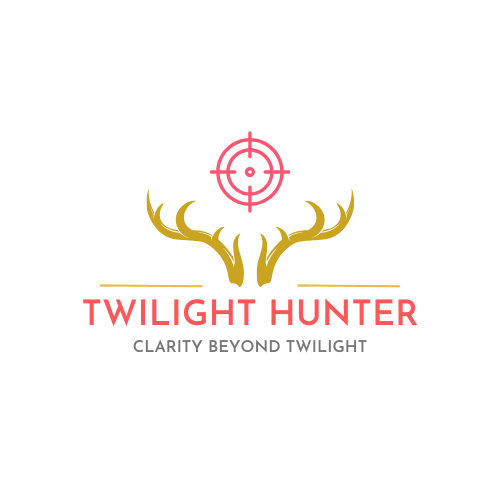

If you’re an avid hunter who enjoys the thrill of nocturnal pursuits, you may have encountered a common challenge: how to minimize noise when using night vision for hunting. Whether you’re trying to keep your steps stealthy or ensuring your gear doesn’t give away your position, reducing noise is crucial for a successful hunt.
This article will provide you with practical tips and techniques to help you navigate the darkness with finesse and keep unwanted noise to a minimum, enhancing your chances of a fruitful hunting experience.
Choosing The Right Equipment
Selecting a Quiet Night Vision Scope
When choosing a night vision scope for hunting, it is essential to prioritize low noise levels. Look for scopes that are specifically designed to reduce sound output. These scopes often have built-in noise-reduction technology or sound-dampening materials.


Additionally, choose scopes that have smooth and quiet operation when adjusting focus or zoom. This will minimize any unnecessary noise that could startle your prey.
Opting for a Low-Noise Weapon
To minimize noise while hunting with night vision, it is crucial to select a weapon that is inherently quiet. Bolt-action rifles or firearms with integrated suppressors are excellent choices for noise reduction.
These types of firearms have a slower and more controlled shot release, significantly reducing the sound produced. Consider investing in a rifle specifically intended for quiet operation to enhance your stealth and chances of a successful hunt.
Using a Silent Shooting Rest
When using night vision for hunting, it is essential to keep your shots steady and stable. Using a shooting rest can significantly contribute to accuracy, which ultimately minimizes noise caused by missed shots. Opt for shooting rests that are specifically designed to be silent, such as those made with noise-dampening materials or rubberized surfaces.
By using a silent shooting rest, you not only enhance your shooting precision but also decrease the overall noise emitted during your hunting sessions.
Suppressing Sound From Firearms
Understanding Firearm Suppressors
Firearm suppressors, commonly known as silencers, are devices designed to reduce the noise produced when a firearm is discharged. They work by trapping and cooling the expanding gases produced by the gunpowder when firing a bullet.
By adding a suppressor to your firearm, you can significantly reduce the noise level emitted and make your shots less likely to be heard by both the game and nearby individuals.
Installing a Suppressor on Your Gun
To benefit from the noise reduction capabilities of a firearm suppressor, it is crucial to install it correctly on your weapon. Ensure that you follow all legal requirements and regulations for suppressor ownership and use in your area. Seek professional assistance if needed to ensure proper installation and alignment with your firearm.
By installing a suppressor correctly, you will experience significantly reduced noise levels during your hunting endeavors.
Considering Subsonic Ammunition
Subsonic ammunition is an excellent option to minimize noise when using night vision for hunting. Unlike supersonic ammunition, which produces a loud sonic boom as it breaks the sound barrier, subsonic ammo does not produce much noise. It travels at speeds below the speed of sound, resulting in a quieter discharge.
By using subsonic ammunition, you can further enhance the stealth aspect of your hunting and minimize the noise associated with shooting.
Effective Gun Handling Techniques
Maintaining Your Firearm Properly
A well-maintained firearm performs more quietly and reliably. Regularly clean and lubricate your firearm, paying attention to moving parts and the barrel. This helps ensure smooth operation and reduces any potential noise caused by mechanical friction.
Additionally, regularly inspect and tighten any loose components, as loose parts can rattle and produce unwanted noise during your hunting trips.
Using a Decelerator Butt Pad
The recoil produced when firing a firearm can generate noise and vibration. To minimize this, consider using a decelerator butt pad on your rifle buttstock. These pads are specifically designed to absorb and reduce felt recoil, resulting in a quieter shooting experience.
Not only does a decelerator butt pad decrease the noise associated with recoil, but it also enhances your comfort and shooting accuracy.
Applying Camouflage Wraps
The sound of metal components accidentally rubbing against one another can potentially give away your position while hunting. To prevent this, apply camouflage wraps or tape to any areas of your firearm that are prone to contact and noise. Camouflage wraps not only help conceal your weapon but also dampen any sound caused by metal-on-metal contact.
This small modification can significantly contribute to your overall stealth and success while using night vision for hunting.
Movement and Positioning
Developing Stealthy Movement
Minimizing noise during hunting goes beyond just the equipment you use; it also involves your movement and positioning. Develop stealthy movement techniques by practicing light steps, and rolling your feet from heel to toe, rather than stomping or dragging.
Take your time and move slowly, paying attention to the ground beneath you and any potential noise sources. By becoming more aware of your movement and adjusting accordingly, you can significantly reduce the overall noise you produce while hunting.
Avoiding Brush and Dry Leaves
When moving through the hunting terrain, be mindful of brush and dry leaves. These natural elements are prone to making noise when stepped on or brushed against. Opt for quieter paths, such as soft ground or patches of moss, whenever possible.
When encountering brush, try to lift your feet slightly higher to avoid unnecessary rustling. By avoiding noisy obstacles, you can maintain a higher level of stealth and improve your chances of success.
Positioning Yourself for Minimum Noise
When setting up your hunting position, consider the noise level of your surroundings. Choose locations that offer natural cover, such as foliage or rocks, to help absorb and disguise any noise you may inadvertently create.
Additionally, position yourself in a way that takes advantage of natural sound barriers, such as hills or dense vegetation, to minimize the sound of your movements. By being mindful of your positioning, you can maximize your stealth and improve your hunting experience.
Choosing The Right Footwear for Night Vision Hunting


Opting for Quiet Boots or Shoes
The type of footwear you choose plays a significant role in minimizing noise while hunting. Opt for boots or shoes designed specifically for quiet and stealthy movement. Look for footwear that features noise-reducing materials, such as rubber soles or specialized padding.
Additionally, choose footwear that fits properly and does not produce squeaking or creaking sounds when walking. By selecting the right footwear, you can move quietly and efficiently while hunting with night vision.
Using Noise-Dampening Insoles
To further enhance the noise-minimizing capabilities of your footwear, consider using noise-dampening insoles. These insoles are designed to absorb and reduce the impact noise and vibration produced when walking or running. They are typically made of materials like gel or foam, which help reduce the sound caused by footfalls.
By equipping your footwear with noise-dampening insoles, you can move silently and increase your chances of a successful hunt.
Utilizing Natural Sound Barriers
Taking Advantage of Terrain Features
Nature provides various sound barriers that can help conceal your presence while hunting. Take advantage of terrain features such as hills, valleys, or ridges by positioning yourself on the leeward side, which is the side that faces away from the wind. These features can help dissipate sound waves and reduce the noise that reaches your target.
By utilizing the natural sound barriers offered by the terrain, you can maintain a higher level of stealth during your hunting activities.
Using Vegetation as Sound Obstacles
Vegetation, such as bushes, shrubs, or tall grass, can serve as effective sound obstacles. When moving or positioning yourself, try to use vegetation as cover to mask any noise you may produce. The rustling of leaves or branches can be easily camouflaged within the sounds of the surrounding natural environment.
By strategically utilizing vegetation, you can effectively minimize the noise you create and remain undetected by your prey.
Silencing Your Gear
Securing Loose Items to Minimize Noise
During your hunting expedition, it is crucial to secure any loose items to minimize noise. Ensure that your gear, such as binoculars, rangefinders, or accessories, is securely fastened or stored in noise-reducing pouches or pockets.
Loose items can easily rattle or clang against each other, potentially alerting game creatures to your presence. By securing your gear, you can significantly reduce the noise associated with movement and ensure a more stealthy hunting experience.
Using Rubberized or Fabric Covers
If the gear you use has components made of metal or hard materials, consider using rubberized or fabric covers to reduce noise. These covers help dampen sound caused by contact between objects, preventing any unnecessary noise from compromising your stealth.
These covers are commonly available for scopes, tripods, or other hunting gear. By using rubberized or fabric covers, you can minimize the noise produced when handling or setting down your equipment.
Avoiding Metal-on-Metal Contact
Metal-on-metal contact can produce loud, attention-grabbing noises that can scare off your targets. When handling or using your hunting gear, be mindful of any potential metal-on-metal contact and take steps to prevent it.
Apply lubrication or use noise-dampening materials, such as fabric or rubber, to minimize the noise caused by metallic components rubbing against each other. By avoiding metal-on-metal contact, you can maintain a higher level of stealth and increase your chances of a successful hunt.
Maintaining Stealthy Communication


Using Hand Signals Instead of Verbal Communication
When hunting with a partner or a group, it is essential to maintain silent communication. Instead of relying on verbal communication that can be easily heard by game creatures, use hand signals to communicate with your companions.
Establish a set of commonly understood signals beforehand, ensuring that everyone knows the appropriate gestures. By using hand signals, you can effectively exchange information without alerting nearby prey to your presence.
Using Silent Communication Tools
In addition to hand signals, there are various tools available specifically designed for silent communication during hunting. These tools include silent whistles, vibration-based communication devices, or even specialized apps on your smartphone. Explore these options and choose the one that best suits your hunting needs.
By utilizing silent communication tools, you can maintain effective coordination with your hunting party while minimizing the noise associated with conventional communication methods.
Being Mindful of Wind Direction


Understanding the Importance of Wind
Wind direction plays a crucial role in hunting quietly and effectively. The scent you emit can alert game creatures to your presence, even if you are making minimal noise. Therefore, it is important to be mindful of wind direction and position yourself accordingly.
Always try to position yourself downwind from your target, ensuring that your scent is carried away from them. By understanding and utilizing the wind direction, you can significantly enhance your stealth and chances of a successful hunt.
Positioning Yourself Downwind
When planning your hunting strategy, prioritize positioning yourself downwind from your target. This means placing yourself in a location where the prevailing wind will carry your scent away from the game animal. By positioning yourself downwind, you minimize the chances of your scent reaching the prey, reducing the likelihood of detection.
Consider using wind indicators, such as feather floats or scent-detecting powders, to help determine wind direction and make informed decisions about your positioning.
Using Wind Detection Devices
To further ensure you are in the optimal position, consider using wind detection devices. These devices, such as smoke wands or pocket-sized anemometers, help you accurately determine wind direction and speed. By having real-time wind data at your disposal, you can adjust your positioning accordingly and remain undetected by your target.
Wind detection devices can be valuable tools for hunters aiming to minimize noise and maximize stealth during their night vision hunting experiences.
Practicing Patience and Discipline
Avoiding Impulsive Actions
When hunting with night vision, it is crucial to practice patience and avoid impulsive actions that may lead to unnecessary noise. Remain calm and composed, carefully observing your target and waiting for the opportune moment to strike.
Avoid sudden movements or hasty decisions that could startle the game or compromise your stealth. By practicing patience and discipline, you increase your chances of a successful and noise-free shot.
Taking Your Time For a Quiet Shot
One of the key aspects of minimizing noise when using night vision for hunting is taking your time to line up a quiet shot. Rushing or becoming anxious can lead to jerky movements or sloppy handling of your firearm, resulting in noise.
Take a deep breath, steady your aim, and apply gentle pressure on the trigger to ensure a smooth and quiet shot. By maintaining control and taking your time, you can make a noise-free shot and increase your overall hunting success.
In conclusion, minimizing noise while using night vision for hunting requires a combination of proper equipment selection, effective techniques, and mindful actions. By choosing quiet equipment, employing effective gun handling techniques, utilizing natural sound barriers, and practicing patience, you can enhance your stealth and increase your chances of a successful hunting experience with night vision.
Remember, the goal is to become one with your environment and minimize any unnecessary noise that could alert your prey. Happy hunting!




